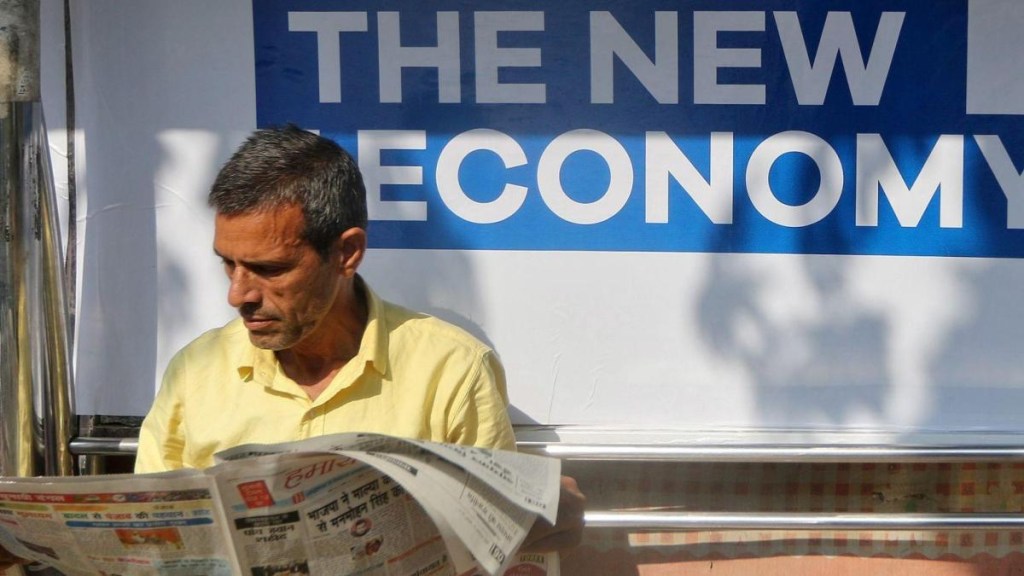India’s general election is just kicking off, but it is unlikely to change the country’s political equilibrium. One of the factors favouring a continuation of this equilibrium is the development of a robust, albeit restricted, sense of national pride. There is evidence that many Indians view the country as a rising global power, and the country’s leadership that is not averse to making that claim. Along with geopolitics, a strong recent growth record is a contributing factor to this sense of rising status, although India will need decades of rapid economic growth just to reach where China is today.
The current government has been unabashedly pro-business, and pursued an industrial policy that subsidises some businesses, seeking to accelerate their growth. The growth of firms can allow them to take advantage of economies of scale, and of learning-by-doing, though the latter mechanism is not guaranteed, especially if there is no competitive pressure on the subsidised firms. In the case of the East Asian “miracle” economies, this pressure came from competing in export markets, and one policy that helped them pursue this “export-led” growth was keeping their exchange rates undervalued.
A new analysis by California economist Paul Bergin and Korean economists Woo Jin Choi and Ju H Pyun offers some insights into the mechanism that could have driven sustained high economic growth. Their data consists of 45 advanced and developing economies over the period from 1985-2007, so their conclusions are not based on the 1960s East Asian miracle. The analysis suggests that capital controls and the accumulation of foreign exchange reserves, policies that are associated with undervalued exchange rates, led to a dual effect on the dynamics of business firms. These policies helped existing firms to grow, and also shifted business activity from countries that were not pursuing such policies. These dynamics were the basis for sustained growth, through larger productivity gains.
In the current global economy, shifting production, or what the authors of the study call “firm delocation”, is associated with reconfiguring global production networks, so the process now is likely to be different from what it was three or five decades ago. In India’s case, a global political rebalancing — moving away from reliance on China — gives it an opening beyond what pure economic factors might determine. This opening may include foreign direct investment (FDI), which has been increasing in India over the past few years, both through liberalised Indian policy and because India is viewed as a more attractive investment destination.
FDI brings know-how with it, and it is difficult to see how India generates the firm dynamics it needs without it. But foreign capital can put upward pressure on the exchange rate. Measuring “real” exchange rate levels, which take account of differences in inflation between countries, is a tricky exercise, but it does appear that India’s real exchange rate has risen since the start of its growth boom of the early 2000s. There was a brief reversal during the US Federal Reserve’s tapering of its expansionary monetary policy in 2013, but the real exchange rate has otherwise remained higher than in the 1990s and early 2000s.
If policy ideas are to be drawn from the Bergin-Cho-Pyun study, then there might be a case for India’s central bank, the RBI, to allow the exchange rate to depreciate, possibly by neutralising some foreign exchange inflows. This can also be a tricky direction for policy, since it can fuel domestic inflation, but there could be a case for domestic restructuring to reduce market frictions and provide at least a one-off countereffect to bring down prices. In particular, India’s agricultural sector is extremely inefficient, and this inefficiency reflects in food prices and food price inflation, which is where political pitfalls are the greatest. In 2020, the government had broadly the right idea for tackling this issue, but botched the design, sequencing, and proposed implementation of agricultural reforms.
To recap the elements of a possible growth strategy for India, industrial dynamics have to be accelerated, especially through greater participation in global production networks. This will lead to productivity gains and sustained growth. Enabling this process means keeping the exchange rate lower, to enhance the global competitiveness of Indian firms. But the inflationary consequences of this have political ramifications, particularly in the food sector. Agricultural market reforms which are based on some kind of inclusive approach and political consensus can provide a one-time counter to inflationary impacts. The previous reform effort was particularly opposed by farmers who were not being directly affected — but their anxiety was indicative of a broken national food procurement policy. Changing that has to be part of the reforms.
Providing subsidies to industrial firms can help India get its manufacturing sector going, but it can also be fiscally costly and have limited impact. If the Bergin-Choi-Pyun study has relevance for India’s current situation, a change in macroeconomic policies to foster greater export competitiveness and thereby accelerate and broaden the dynamics of industrial growth could be warranted. Intelligent reforms in the agricultural sector and food procurement policies could make this macroeconomic policy realignment more politically feasible. None of this would be easy, but sustained economic growth is harder to achieve than short-term boosts in national pride.
The author is professor of economics, University of California, Santa Cruz.
Disclaimer: Views expressed are personal and do not reflect the official position or policy of Financial Express Online. Reproducing this content without permission is prohibited.

